Hamideh Hajiabadi
Investigating the Impact of COVID-19 on Education by Social Network Mining
Mar 13, 2022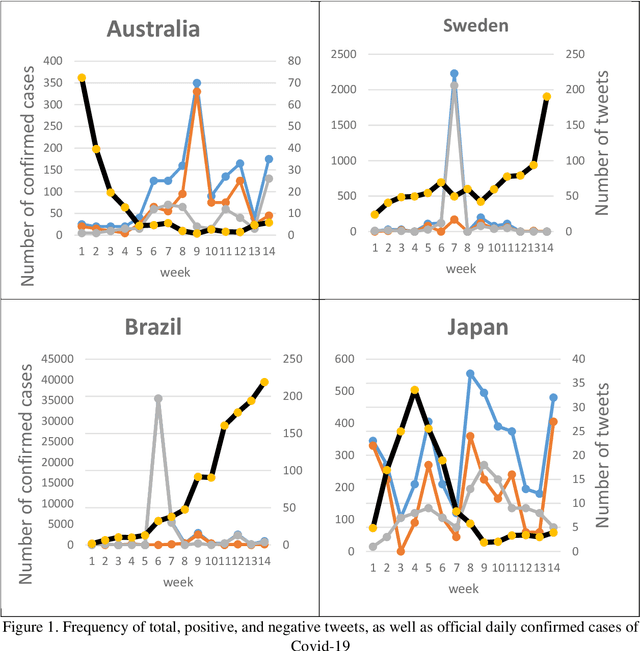
Abstract:The Covid-19 virus has been one of the most discussed topics on social networks in 2020 and 2021 and has affected the classic educational paradigm, worldwide. In this research, many tweets related to the Covid-19 virus and education are considered and geo-tagged with the help of the GeoNames geographic database, which contains a large number of place names. To detect the feeling of users, sentiment analysis is performed using the RoBERTa language-based model. Finally, we obtain the trends of frequency of total, positive, and negative tweets for countries with a high number of Covid-19 confirmed cases. Investigating the results reveals a correlation between the trends of tweet frequency and the official statistic of confirmed cases for several countries.
Extracting Feelings of People Regarding COVID-19 by Social Network Mining
Oct 12, 2021
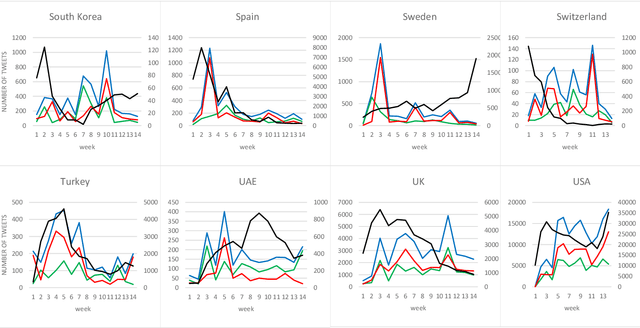
Abstract:In 2020, COVID-19 became the chief concern of the world and is still reflected widely in all social networks. Each day, users post millions of tweets and comments on this subject, which contain significant implicit information about the public opinion. In this regard, a dataset of COVID-related tweets in English language is collected, which consists of more than two million tweets from March 23 to June 23 of 2020 to extract the feelings of the people in various countries in the early stages of this outbreak. To this end, first, we use a lexicon-based approach in conjunction with the GeoNames geographic database to label the tweets with their locations. Next, a method based on the recently introduced and widely cited RoBERTa model is proposed to analyze their sentimental content. After that, the trend graphs of the frequency of tweets as well as sentiments are produced for the world and the nations that were more engaged with COVID-19. Graph analysis shows that the frequency graphs of the tweets for the majority of nations are significantly correlated with the official statistics of the daily afflicted in them. Moreover, several implicit knowledge is extracted and discussed.
Analyzing the Impact of COVID-19 on Economy from the Perspective of Users Reviews
Oct 05, 2021
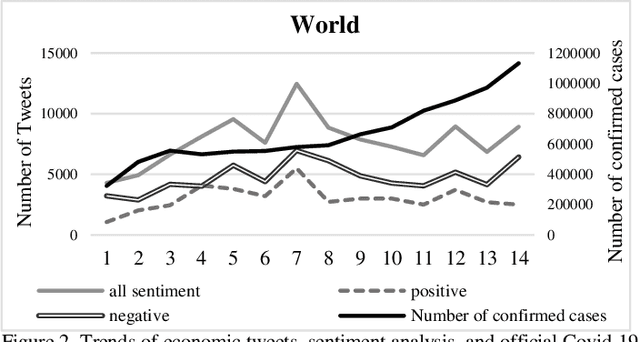
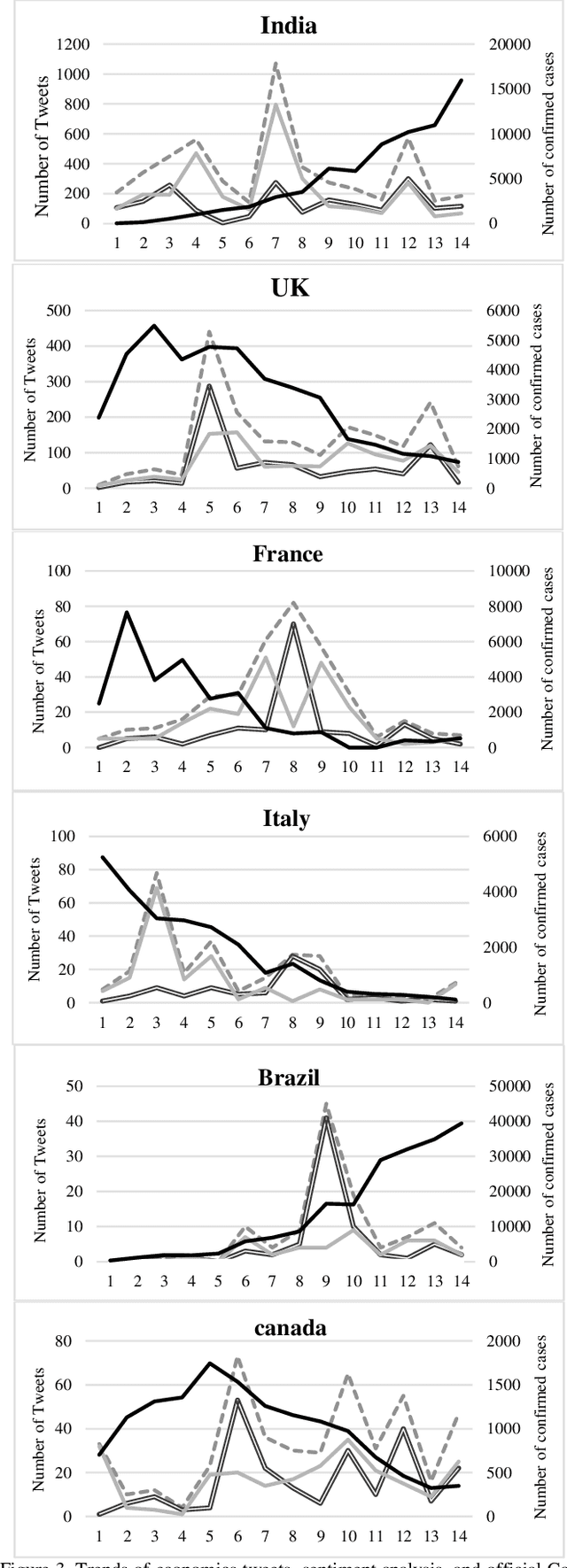
Abstract:One of the most important incidents in the world in 2020 is the outbreak of the Coronavirus. Users on social networks publish a large number of comments about this event. These comments contain important hidden information of public opinion regarding this pandemic. In this research, a large number of Coronavirus-related tweets are considered and analyzed using natural language processing and information retrieval science. Initially, the location of the tweets is determined using a dictionary prepared through the Geo-Names geographic database, which contains detailed and complete information of places such as city names, streets, and postal codes. Then, using a large dictionary prepared from the terms of economics, related tweets are extracted and sentiments corresponded to tweets are analyzed with the help of the RoBERTa language-based model, which has high accuracy and good performance. Finally, the frequency chart of tweets related to the economy and their sentiment scores (positive and negative tweets) is plotted over time for the entire world and the top 10 economies. From the analysis of the charts, we learn that the reason for publishing economic tweets is not only the increase in the number of people infected with the Coronavirus but also imposed restrictions and lockdowns in countries. The consequences of these restrictions include the loss of millions of jobs and the economic downturn.
Extracting Major Topics of COVID-19 Related Tweets
Oct 05, 2021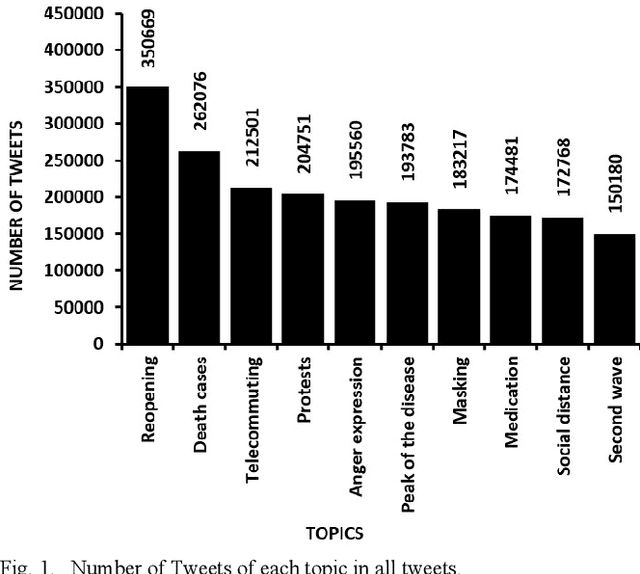

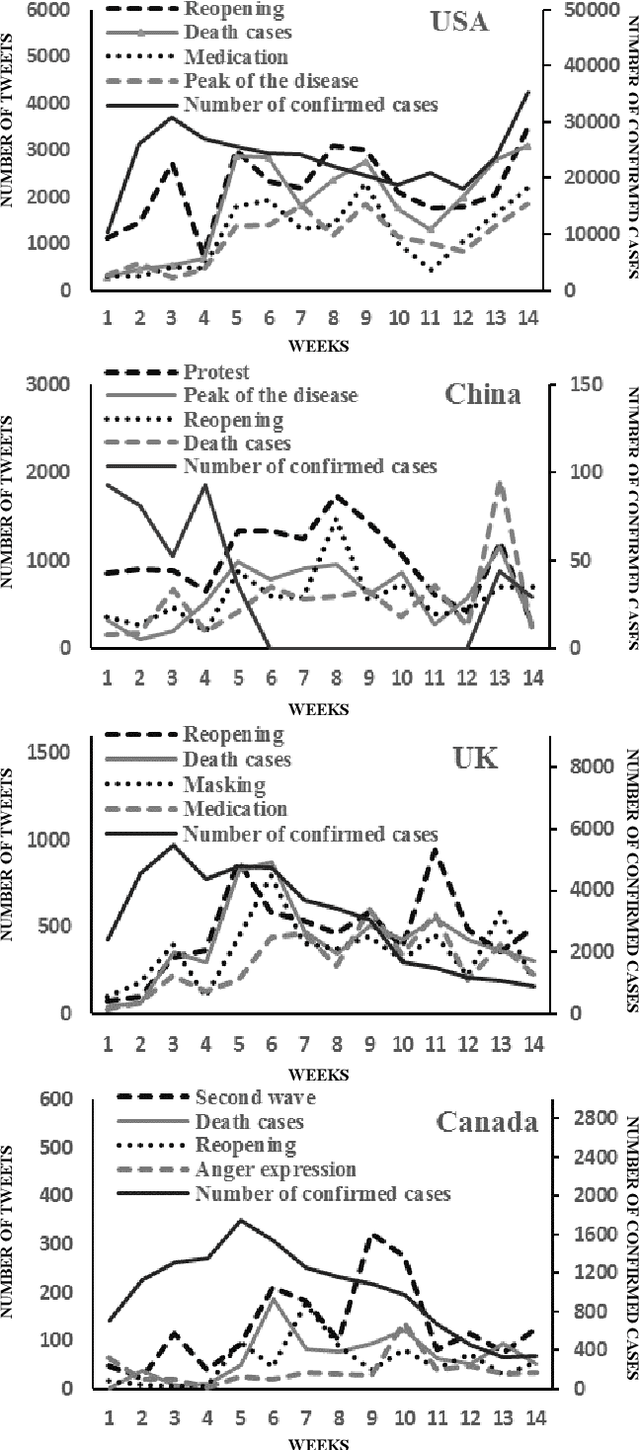
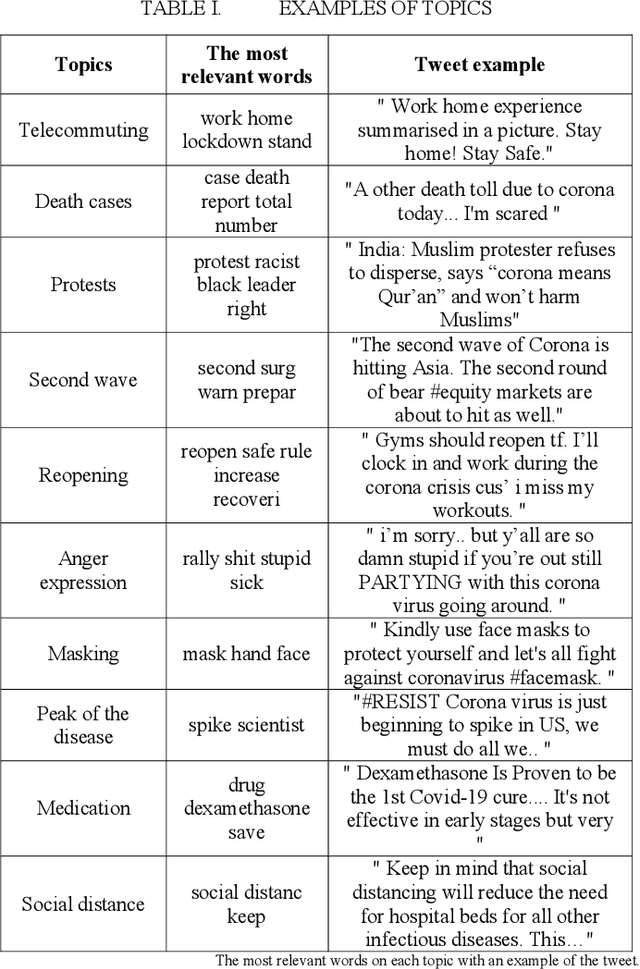
Abstract:With the outbreak of the Covid-19 virus, the activity of users on Twitter has significantly increased. Some studies have investigated the hot topics of tweets in this period; however, little attention has been paid to presenting and analyzing the spatial and temporal trends of Covid-19 topics. In this study, we use the topic modeling method to extract global topics during the nationwide quarantine periods (March 23 to June 23, 2020) on Covid-19 tweets. We implement the Latent Dirichlet Allocation (LDA) algorithm to extract the topics and then name them with the "reopening", "death cases", "telecommuting", "protests", "anger expression", "masking", "medication", "social distance", "second wave", and "peak of the disease" titles. We additionally analyze temporal trends of the topics for the whole world and four countries. By analyzing the graphs, fascinating results are obtained from altering users' focus on topics over time.
RELF: Robust Regression Extended with Ensemble Loss Function
Oct 25, 2018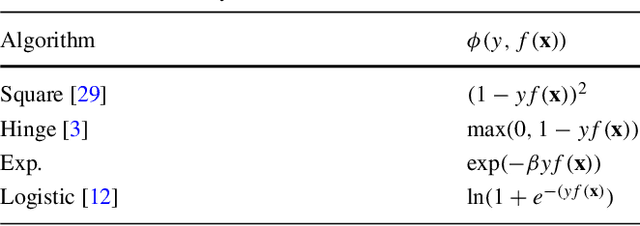

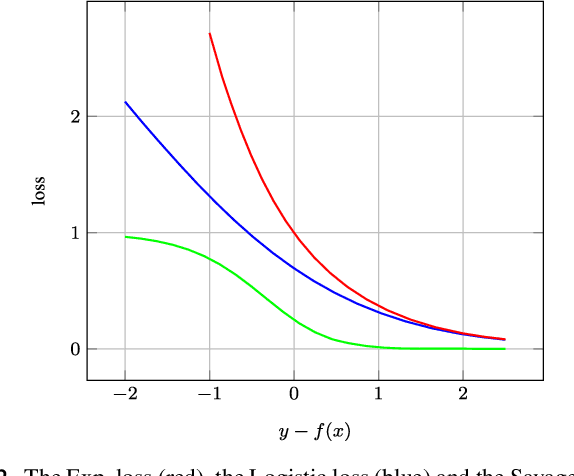

Abstract:Ensemble techniques are powerful approaches that combine several weak learners to build a stronger one. As a meta-learning framework, ensemble techniques can easily be applied to many machine learning methods. Inspired by ensemble techniques, in this paper we propose an ensemble loss functions applied to a simple regressor. We then propose a half-quadratic learning algorithm in order to find the parameter of the regressor and the optimal weights associated with each loss function. Moreover, we show that our proposed loss function is robust in noisy environments. For a particular class of loss functions, we show that our proposed ensemble loss function is Bayes consistent and robust. Experimental evaluations on several datasets demonstrate that our proposed ensemble loss function significantly improves the performance of a simple regressor in comparison with state-of-the-art methods.
On Extending Neural Networks with Loss Ensembles for Text Classification
Nov 14, 2017
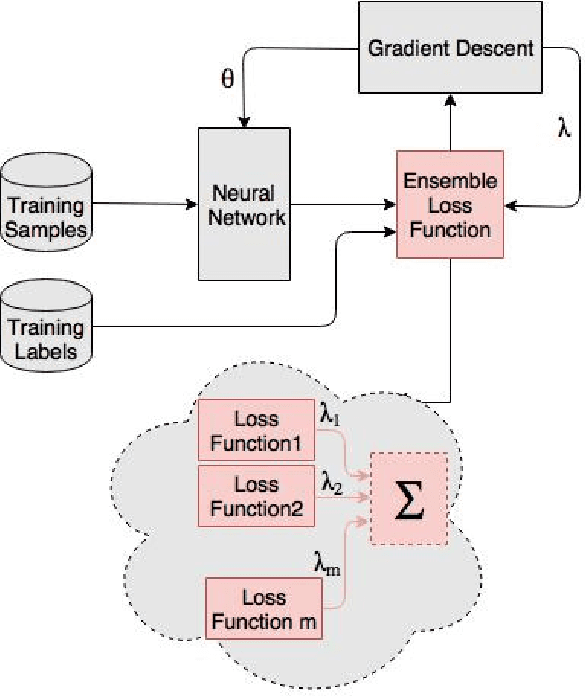


Abstract:Ensemble techniques are powerful approaches that combine several weak learners to build a stronger one. As a meta learning framework, ensemble techniques can easily be applied to many machine learning techniques. In this paper we propose a neural network extended with an ensemble loss function for text classification. The weight of each weak loss function is tuned within the training phase through the gradient propagation optimization method of the neural network. The approach is evaluated on several text classification datasets. We also evaluate its performance in various environments with several degrees of label noise. Experimental results indicate an improvement of the results and strong resilience against label noise in comparison with other methods.
 Add to Chrome
Add to Chrome Add to Firefox
Add to Firefox Add to Edge
Add to Edge